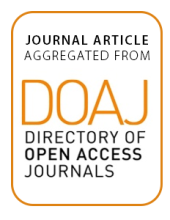Land Library Search
Through our robust search engine, you can search for any item of the over 73,000 highly curated resources in the Land Library.
If you would like to find an overview of what is possible, feel free to peruse the Search Guide.
/ library resources
Showing items 1 through 9 of 162.This study focuses on how traditional rural landscape and proximity to a Natura 2000 Site of Community
Importance (SCI) might influence consumers’ choice of an agritourism farm for a weekend stay. Data were
The Red Palm Weevil (RPW), after its accidental introduction in Italy in 2005, determined a progressive
disruption of Canary palms mostly in the central and southern regions. As it is difficult to undertake the
Article 11 shall be amended to add the following wording: “Transfer of forest land into other categories of land shall be prohibited in the following cases: (a) Group I forests; (b) Group II - protection of ecosystems in forests, except in specified cases; (c) in groups III - in forests of protec
There is a rapidly growing body of literature on the theory about the ecosystem service concept and the practical assessment of
ecosystem services in different contexts ranging from natural to urban environments. Yet, where does the concept reach its limits?
Background: To address the structural food deficit and top down extension system that persisted for decades, the government of Ethiopia has introduced a new extension system, called Participatory Demonstration and Training Extension Systems, which serves more than 80% of the total population
Article 13 shall be amended to add the following wording: “Article 13. Flora and fauna management companies. 1.
Background: In South Africa, the idea that the township economy needs to be ‘revitalised’ has begun to gain significant political traction.
Inadequacies in the indication of cultural ecosystem services (CES) are a hindrance in assessing their
comprehensive impacts on human wellbeing. Similarly, uncertainties about the quantity and quality of
Ecosystem-based adaptation (EbA) is increasingly being promoted as a cost-effective means of adaptation to climate change. However, in spite of considerable international press, there is still little evidence to substantiate this claim.


